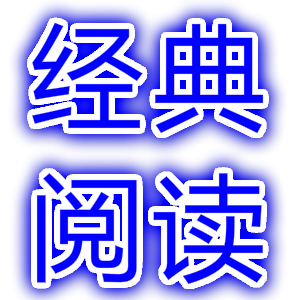英文景点导游词优秀4篇
篇一:英文导游词 篇一
The Yu Gardens are a classical landscape in the Southern Chinese style with a history of more than 400 years. Pavilions, halls, rockeries and ponds display the finest in landscaping from the Southern style as seen in the Ming and Qing dynasties. More than 40 landscapes were ingeniously separated by latticed walls, winding corridors, and lattice windows.
Huaqing Pool is situated about 35 kilometres east of the city of Xi’an. Historically, the Western Zhou dynasty saw the construction of the Li Palace on the spot. In the Qin dynasty a pool was built with stones, and was given the name Lishan Tang (the Lishan Hot Spring)。 The site was extended into a palace in the Han dynasty, and renamed the Li Palace (the Resort Palace)。 In the Tang dynasty, Li Shimin (Emperor Tai Zong) ordered to construct the Hot Spring Palace, and Emperor Xuan Zong had a walled palace built around Lishan Mountain in the year of 747. It was known as the Huaqing Palace. It also had the name Huaqing Pool on account of its location on the hot springs.
Huaqing Pool is located at the foot of the Lishan Mountain, a branch range of the Qinling Ranges, and stands 1,256 metres high. It is covered with pines and cypresses, looking very much like a like a dark green galloping horse from a long distance. So it has the name of the Lishan Mountain (Li means a black horse)。
Located at the 12 kilometers east of Luoyang city, the White Horse Temple is one of the oldest Buddhist temples in China and is renowned as the cradle of Chinese Buddhism. Although it is not the largest nor the most beautiful Buddhism monument in China, this temple with its large number of Buddhism items housed there, is well worth a trip.
The Tang dynasty Emperor Xuan Zong and his favourite lady, Yang Gui Fei used to make their home at Frost Drifting Hall in winter days. When winter came, snowflakes were floating in the air, and everything in sight was white. However, they came into thaw immediately in front of the hall. It owed a great deal to the luke warm vapour rising out of the hot spring. This is the Frost Drifting Hall that greets us today.
篇二:英文导游词开场白 篇二
Ladies and Gentlemen,
Welcome to Hubei. My name isxx, I am from hubei hailian travel service. I will be your local guide during your stay in Hubei. This is our driver, Mr Wang. His bus number is FH123xx。On behalf of my travel agency, we hope you have a nice journey here. If you have any special interest, please tell your tour leader, and he will let us know. (What do you need to be put to me, I will solve , we began to Golden Summit Mountain trip, right?)My job is to smooth your way, care for your welfare, try my best to answer your question, and be your guide and interpreter. I will try to do my level best to “warm the cockles of your heart”。 We highly appreciate your understanding and cooperation.
篇三:英语导游词 篇三
Among the numerous cultural relics and historic sites in Guiyang, there is a national key cultural relics protection unit Xifeng concentration camp; there is the only wooden structure with three stories and three eaves and unequal sides of jiujiaozanjianding attic in China; Wenchang Pavilion built in 1610, the 38th year of Wanli in the Ming Dynasty; Jiaxiu Pavilion, as the current symbol of Guiyang City, built in 1598, the 26th year of Wanli in the Ming Dynasty; There are the largest Buddhist jungle in Guizhou, Hongfu temple built in 1672, and Yangming temple built in 1794 in memory of Shou Ren, a famous philosopher and educator of the Ming Dynasty.
Guiyang is a multi-ethnic city with the Han nationality as the main population. Its long history has bred the splendid national cultures of 38 ethnic groups in this land, and formed a strong national customs. There are young men and women of ethnic minorities through affectionate songs and dances, and "April 8", "March 3", "June 6" and "dance field" festivals to find their favorite people; Nuo opera and local opera, known as the rudiment and "living fossil" of Chinese drama, trace the long history of Chinese culture and record the blend of Central Plains culture and Guizhou national culture.
Embroidery and cross stitch are two wonderful flowers blooming in the hundred flower garden of Guiyang National traditional crafts. Batik products contain the artistic charm of national culture. They are favored by friends at home and abroad, just like the rough, simple Nuo masks and other national cultural products.
篇四:英文的导游词 篇四
Good morning! Ladies and gentlemen:
Today we will go and visit the Nanyue Temple, Nanyue Temple is situated on the northern tip of Nanyue Township and at the southern foot of Chidi Peak. In a layout of nine rows, It is the largest and best-preserved ancient palatial architectural complex of south China. Magnificent and splendid with resplendent upturned eaves. Inside the east in parallel to eight Buddhist palaces on the west, It is indeed a wonder in the history of religion that Taoism. Buddhism and Confucian culture can co-exist within a single temple.
The exact time of the construction of Nanyue Temple is unknown. It existed asearly as in the Qin and Han Dynastis. Originally Located on the summit of Zhurong Peak, The temple was later moved to the mountain foot to facilitate the religious activities. The beginning of the Tang Dynasty witnessed the formal construction of the Heavenly Lord Huo"s Temple" the "Heavenly Master Temple"。 So as to enshrine and worship the Gods of the five sacred mountains, During the Song Dynasty the immortal of the Hengshan Mountain was revered as the "Heavenly Master Zhaosheng",as a result the temple was gradually expanded and enlarged. Since the Tang Dynasty Nanyue Temple had beed subject to six fires and 16reconstructions all through the Song. Yuan, Ming and Qing Dynasties. In the 8th year of Emperor Guangxu"s reign in the Qing Dynasty (1882 A.D), the Imperial Court ordered the rbuilding of Nanyue Temple. Which had been ruined by lightning, The project was imitative. Copying the styles of the Imperial Palace. And even to the present day it is still well preserved.
Fenced with red-brick ue Temple ccupies an area of some 70.000 square metres. From north to south lies in sequence nine rows and four courtyards-Lingxing Gate. Kuixing Tower. Chuan Gate. Pavilion of Imperial Study, Main Hall, Dwelling Palace and the Northern Rear Exit. The whole architecture complex stretches across on axis extending from south to north with its halls linked up together. The winding corridors and wing-rooms on both sides merge with each other. Accentuating the magnificence of the stature of the principal part. On the east side of the main temple there are eight Taoist palaces. Coordinating with eight Buddhist palaces on the west side.
The first row is Lingxing Gate. Two gilded Chinese characters "Mountain Temple" are shining on the white marble at the top of the gate. The marble gate stands as high as 20 metres with a width of 1.1 metres and is meant to imply that during the past dynasties all the religious activities were officiated by real knowledgeable people. The second row is kuixing Tower. The most perfectly preserved ancient stage in Human a breadth of 35metres and a length of 12. Its fa?ade facing the main palace, the stage is the place where people hold religious activities and perform local operas during pilgrimage. Before the tower stands a pair of 2-metre tall stone Kylin (Chinese unicorn)。 With their furious eyes widely open. They are like two solemn looking sentinels guarding the tower.
The pebble path under the Kuixing Tower leads to the third row-Main Chuan Gate. East and West Gates. The gateway is made of gray bricks with an awesome depth and height of 15 metres. The courtyard within is filled with dense cypress trees and carpeted with green grass. The fourth row is the Pavilion of Imperial Study. Distinguished by its gilded tiles. Octagonal doubleeaved roofs and exquisitely-crafted arches. Inside the pavilion there is a Bixi in the shape of a legendary animal like tortoise. Legend has it that Bixi is the ninth son of the dragon. The Bixi carries an imperial stele on which the full text of On Rebuilding Nanyue Temple was carved in the 47th year of Kangxi"s reign(1780 A.D.) in the Qing dynasty.
The fifth row is Jiaying Gate. Named after the line from The Annals of Han-Books of Rites and Joys: "This row is the place where local magistrates and monks welcomed ritual officials dispatched from the capital. After the Jiaying Gate the sixth row comes into view-Tower of Imperial Study. Which is the storehouse of the collection of imperial calligraphies ages and inscribed boards concerning the past emperors" ritual presentations to the mountain. Sweeet osmanthus ahead of the tower submerges the building with its refreshing scent when it blossoms every autumn.
The seventh row is the Main Palace. Surrounded by towering old trees. Camphor trees planted in the Song Dynasty and cypress in the Ming Dynasty compete with each other in setting off the beauty of the upturned double-roofs and the splendour of the palace. Adding tremendous awe to the Main Palac. As it stands 29.11 metres, its girandeur rivals that of the Palace of supreme Harmony in the Forbidden City in Beijing. Inside the palace there are 72 stone pilliars, standing for the 72 peaks on the Hengshan Mountain. The two huge pillars upholding the main roofs were cut out of a whole granite. Each weighing 14 tons.
Encircled by the balustrades are 144 relief sculptures carved out of white marbles. Based on Shanhai Jing 。 Pillars on the forefront overlap. Carved on them are 56 historical and legendary thles 。 On the square door were carved the Images. On the square door were carved the Images of the 24 filial Sons and the Images of the 18 Scholars. Here tourists can get a rough idea of the age-old Chinese Confucian and Taoist cultures. Clay statues-Heavenly King Zhaosheng and General Jin and Wu line up in the palace with their impressively dignified look, calling forth in tourists a feeling of profound respect.
The eighth row is the dwelling Palacewith double roofs and in perfect harmony with the whole mountain. This structure keeps up the architectural style of the Song Dynasty and is decorated with coloured drawings and patterns whichare popular among palaces in the North. giving a sense of gorgeousness to this palace. The ninth row is the Northern Rear Exit. The end of the axial architecture, with Zhusheng Palace to the right and Chief God Palace to the left, At the back of the exit. A path leads farther into the mountain.
Nanyue Temple occupies a prominent position in the history of ancient Chinese architecture. It carries the grandeur characterized by palaces in the North. And at the same time it smacks of the loveliness featured by gardens in the South. The architectural arrangement of the temple is clearly demarcated and gently modulated. Strongly indicating the ingenuity and originality of the craftsmen. Its ground and upper layouts are like an eternal musical movement with its own overture, main body and coda. Demonstrating the excellence of ancient Chinese architecture.
Nanyue Temple carries a profound cultural connotation. It boasts a large number of clay statues. Wood engravings and stone carvings, which are all closely linked up with Chinese tradition and culture. Over 800 dragons of various sizes, which are the symbol of the Chinese be found everwhere in the temple. The carvings on the roof wood and white marble balustrades are an encyclopedia of ancient history and mythology. There are fairy tales- "Pan Gu Creating the Universe." "Hou Yi Shooting the Suns", "Jing Wei Filling up the Ocean"-; real stories about some historical figures- "Su Wu Shepherding Sheep." "sleeping on sticks and Tasting the Gallbladder." "Da MO Crossing the Sea"- ; legends extolling filial piety- "Melting the Ice with Body Warmth to Catch Carps." "Weeping on the Bamboo until it Turns into shoots"- Most of the carvings are the lgends about the earliest ancestors of Taoist immortals. As early as in the Qing and Ming Dynasties, clay status, wood engraving and stone carving were reputed as "the Three Wonders to the South of the Yangtze River."
All through the dynasties Nanyue Temple has been a thriving place to hold religious activities both for the feudal imperial courts and the ordinary people. Every year the temple greets nearly 1.000.000 pilgrims. The offerings, presentation, titles and other customs are almost the same as they were thousands years ago. There are "bowing pilgrimage" in which the pilgrims bow with each step or with every three steps , and "hunger pilgrimage" in which the pilgrims bow with each step or with every three steps. "And hunger pilgrimage" in which the pilgrims refrain from food during their trip. More often. Pilgrims would set off in throngs. They wear gray clothes with a red cloth attached to their chest reading "Hengshan Mountain Pilgrimage." Holding buring incenses in hand. Those pious pilgrims chant pilgriming theme" to pray for the peace of the nation and the wealth of people, making it a really spectacular scene on the mountain.
《英文景点导游词优秀4篇》出自:卡耐基范文网链接地址:http://m.gjknj.com/special/36771.html 转载请保留,谢谢!
- 上一篇:升国旗演讲稿(优秀3篇)
- 下一篇:感恩父母演讲稿优秀6篇
相关文章
推荐文章
- 吃鸡游戏名字女【最新2篇】
- 最火网名男生【最新4篇】
- 独一无二的个人微信名字(2篇)
- 唯美有诗意的网名(通用3篇)
- 有内涵的群聊名称好听的微信群名称【优秀10篇】
- 书画展活动方案(最新5篇)
- 教师教育心得体会(优秀4篇)
- 家访典型事迹案例(推荐【5篇】
- 最新护理专业个人简历精彩9篇
- 社区活动策划书【通用9篇】
- 英语学习制定计划4篇
- 学院安全生产月活动方案(优秀7篇)
- 中秋礼品方案7篇
- 小学生综合素质评价评语优秀4篇
- 关于工作失职的检讨书(最新10篇)
- 端午节放假通知(最新3篇)
- 房屋买卖合同(10篇)
- 租房合同书(最新9篇)
- 房屋租赁合同2022最新房屋租赁合同(通用7篇)
- 建设工程施工合同优秀5篇
- 2022最成熟微信网名优秀6篇
- 承包经营合同【实用5篇】
- 幼儿园教师心得体会最新8篇
- 野外拓展训练心得感悟5篇
- 六一儿童节放假通知优秀9篇
- 幼儿园暑假通知书优秀9篇
- 个人事迹材料【精选5篇】
- 最新撤诉申请书【通用9篇】
- 高中军训心得体会优秀8篇
- 观看同上一堂奥运思政大课个人有感2021【优秀2篇】
- 学生综合素质评价评语最新9篇
- 小班家长会活动方案通用9篇
- 购物狂欢节活动策划通用5篇
- 因病内退申请书精选范文(优秀5篇)
- 倡议书范文300字优秀7篇
- 弱电施工方案【最新2篇】
- 学生会招新策划书【5篇】
- 社区活动方案策划【优秀5篇】
- 异业联盟合作协议书【最新3篇】
- 货款起诉状最新9篇
- 工业产品购销合同【优秀6篇】
- 合作合同协议书5篇模板(通用5篇)
- 培训协议书最新9篇
- 房屋购买合同4篇
- 土地租赁合同协议书样本优秀8篇
- 个人租房合同最简单版【通用6篇】
- 标准版个人借条格式精选2篇
- 关于转让合同协议书优秀范本最新7篇
- 标准房屋租赁合同【9篇】
- 二房东租房合同范本【精选9篇】
- 工伤事故赔偿协议书优秀3篇
- 转让合同协议书范本(通用7篇)
- 三方协议书【最新7篇】
- 陈列协议书最新7篇
- 公证处委托书最新4篇
- 跟单员岗位职责(优秀6篇)
- 商铺出租合同精选6篇
- 简单的个人授权书范本最新8篇
- 人事招聘工作流程(通用3篇)
- 施工进度计划表优秀总结大全_施工计划表总结(精彩5篇)
推荐专题
- 端午节活动个人总结大全
- 试用期员工转正工作总结
- 乡镇基层干部个人工作总结大全
- 2021年信访工作总结大全
- 2021年安全生产主题演讲稿大全
- 护林员个人工作总结大全
- 森林防火工作总结大全
- 政法队伍教育整顿工作总结大全
- 政法队伍教育整顿顽瘴痼疾整治工作总结汇报大全
- 乡镇党委党代会换届工作报告大全
- 优秀党务工作者先进事迹材料大全
- 政法队伍教育整顿查纠整改环节工作总结汇报大全
- 2021年基层党支部工作计划大全
- 2021年下半年党风廉政工作计划大全
- 《红海行动》电影观后感心得体会大全
- 公司员工转正述职报告大全
- 单位职工退休申请书大全
- 2021年防溺水安全建议书大全
- 2021年国庆节促销活动方案大全
- 2021年中秋节活动方案大全
- 国家励志奖学金申请书大全
- 2021年中秋节促销活动方案大全
- 政法队伍教育整顿“顽瘴痼疾"自查自纠情况报告大全
- 政法队伍教育整顿专题民主生活会主持词大全
- 政法队伍教育整顿组织生活会党支部对照检查材料大全
- 政法队伍教育整顿专题民主生活会自我剖析材料大全
- 政法队伍教育整顿专题组织生活会对照检查材料大全
- 关于红色文化宣传主题演讲稿大全
- 优秀党务工作者个人事迹材料大全
- 话廉洁守初心专题研讨个人发言稿大全
- 我为群众服务工作心得体会大全
- 政法队伍教育整顿活动个人自我剖析材料大全
- 政法队伍教育整顿民主生活会个人自查报告大全
- 政法队伍教育整顿专题民主生活会对照检查材料大全
- 政法队伍专题教育整顿个人对照检查材料大全
- 政法干警教育整顿自查自纠对照检查材料大全
- 政法队伍教育整顿民主生活会上的讲话大全
- 政法队伍教育整顿组织生活会对照检查材料大全
- 政协干部培训班个人心得体会大全
- 2021年劳模表彰大会个人心得体会大全
- 2021年防灾减灾日活动总结大全
- 幼儿园防溺水教育活动总结大全
- 幼儿园防溺水安全教育教学方案大全
- 防溺水安全倡议书大全
- 退休教师退休会议上的讲话大全
- 2021年最新干部任职表态发言大全
- 开学典礼上的教师代表发言大全
- 政法队伍教育整顿个人自查报告大全
- 政法队伍教育整顿个人自我剖析大全
- 政法队伍教育整顿个人对照检查大全
- 巡视整改专题民主生活会个人对照检查发言大全
- 最新入党志愿书模板大全
- 医院党风廉政建设工作计划大全
- 入党介绍人的发言稿大全
- 在学校家长会上的发言大全
- 医院医生个人年终总结大全
- 口腔诊所年度工作总结大全
- 教师职业规划报告大全
- 牙科医生工作总结大全
- 政法队伍教育整顿民主生活会自我剖析材料大全




